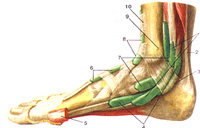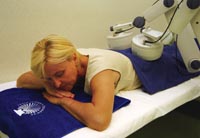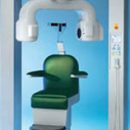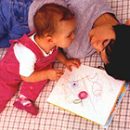Normally in the baby on each hand and foot - five fingers. Normally, but happens and wrong. Congenital battle of one or more fingers - Syndactilia. What is it connected and what to do if your child got into this number?
Content
 What makes a woman in labor when he takes a newborn? Hugs, kisses and... Things fingers. So they did our great-grandmothers, grandmothers and continue to do we, modern moms. Normally in the baby on each hand and foot - five fingers. Normally, but happens and wrong. Currently, more than 10% of children have a congenital battle of one or more fingers - Syndactilia. What is it connected and what to do if your child got into this number?
What makes a woman in labor when he takes a newborn? Hugs, kisses and... Things fingers. So they did our great-grandmothers, grandmothers and continue to do we, modern moms. Normally in the baby on each hand and foot - five fingers. Normally, but happens and wrong. Currently, more than 10% of children have a congenital battle of one or more fingers - Syndactilia. What is it connected and what to do if your child got into this number?
Syndactilia translated from Greek means «Fingers together» (SYNDACTYLIA: SYN - Together, Dactylos - Finger). This is a congenital full or incomplete battle of the fingers of hand or stops as a result of their separation in the process of embryonic development with a disruption of cosmetic and functional state. This pathology accounts for more than 50% of all congenital abnormalities of brushes and stop. Most often there is a fight of III and IV fingers, less often II-III-IV-V, II-III and IV fingers. Quite often this happens simultaneously on both hands or legs - bilateral Syndactilia. In such cases, the battle of the fingers, as a rule, is symmetrical.
Depending on the degree of fabric, there are several types of Syndactilia:
Syndactilia can be both independent vice and consequence of the hereditary factor. If someone from close relatives (to the second knee) had a battle of fingers - the likelihood of the birth of a child with the same problem increases significantly. In this case, when planning pregnancy, future parents need to visit genetics. After special tests, the doctor will make an individual preparation and pregnancy scheme to minimize the risk of genetic inheritance of this vice.
 In the absence of this factor, Sindacticity is most often due to failures in the process of intrauterine development. They may arise as a result of various toxic substances on the mother's body in the process of pregnancy: drugs, nicotine, alcohol, unfavorable environmental situation, work in harmful production.
In the absence of this factor, Sindacticity is most often due to failures in the process of intrauterine development. They may arise as a result of various toxic substances on the mother's body in the process of pregnancy: drugs, nicotine, alcohol, unfavorable environmental situation, work in harmful production.
The infamous example is the consequences of the actions of the talidomide drug, which American women recommended applying for removing the symptoms of early toxicosis. Later it turned out that this drug often leads to congenital child limbs defects. As a result, many children with this kind of problems appeared in the country for a relatively short period of time. It is known that the battle of the fingers is due to the unstaturated separation when they are formed (at the 7-8th week of intrauterine development).
Therefore, during this period, a future mother should be tried to exclude the impact on the body of adverse factors. It is also necessary to take into account that toxic substances are able to accumulate in the body and even when eliminating a negative factor, a long time is able to remind themselves. For example, it has been established that congenital defects of the development of limbs (including Sindactilia) are much more common in women who have worked on chemical production more than 5 years.
If the battle is not all over and the growth of the fingertips, that is, the cosmetic defect is minimal, then you can refrain from operational intervention.
The problem requires surgical interference in the following cases:
- When the cosmetic defect is required,
- In the absence or restriction of differentiated movements of the fingers, which is a large obstacle for normal harmonious, including the intellectual development of the child,
- If the growth of the child is noted a stricted finger growth.
Syndactile is easy to operate, as a rule, after 2 years. With the complex forms of congenital Sindactilia, treatment is recommended already in 5-12 months - to prevent the progression of the existing and the development of secondary deformations. In the postoperative period, the limb fix the gypsum bus for about 1 month.
After removing the seams (for 14-16 days), a set of rehabilitation treatment is prescribed, including brushes massage, electrostimulation of fifteentifiers and detectors of fingers, phonophoresis with lidase for postoperative scars, ozokerite applications. With timely and properly conducted surgical intervention, the Sindactile is eliminated by more than 80% of cases, and in the remaining 20% there is a negative impact of Sindactilia on the growth and development of the limbs of a child.
Syndactilia is often secondary vice and accompanies other disorders of the skeleton. Up to 60% of children with Syndactili have a concomitant congenital pathology of the musculoskeletal system. Therefore, if a child has any of the forms of Syndactilia (even the easiest), it is necessary to have a comprehensive examination as soon as possible to eliminate the presence of other anomalies.









